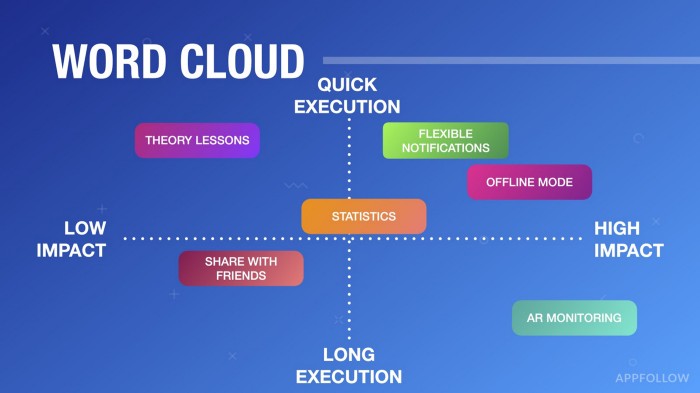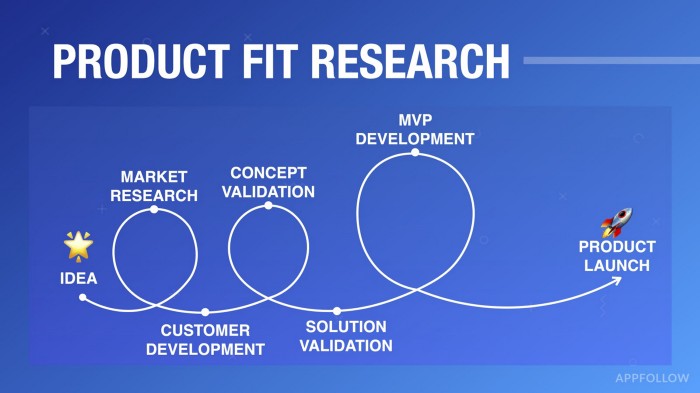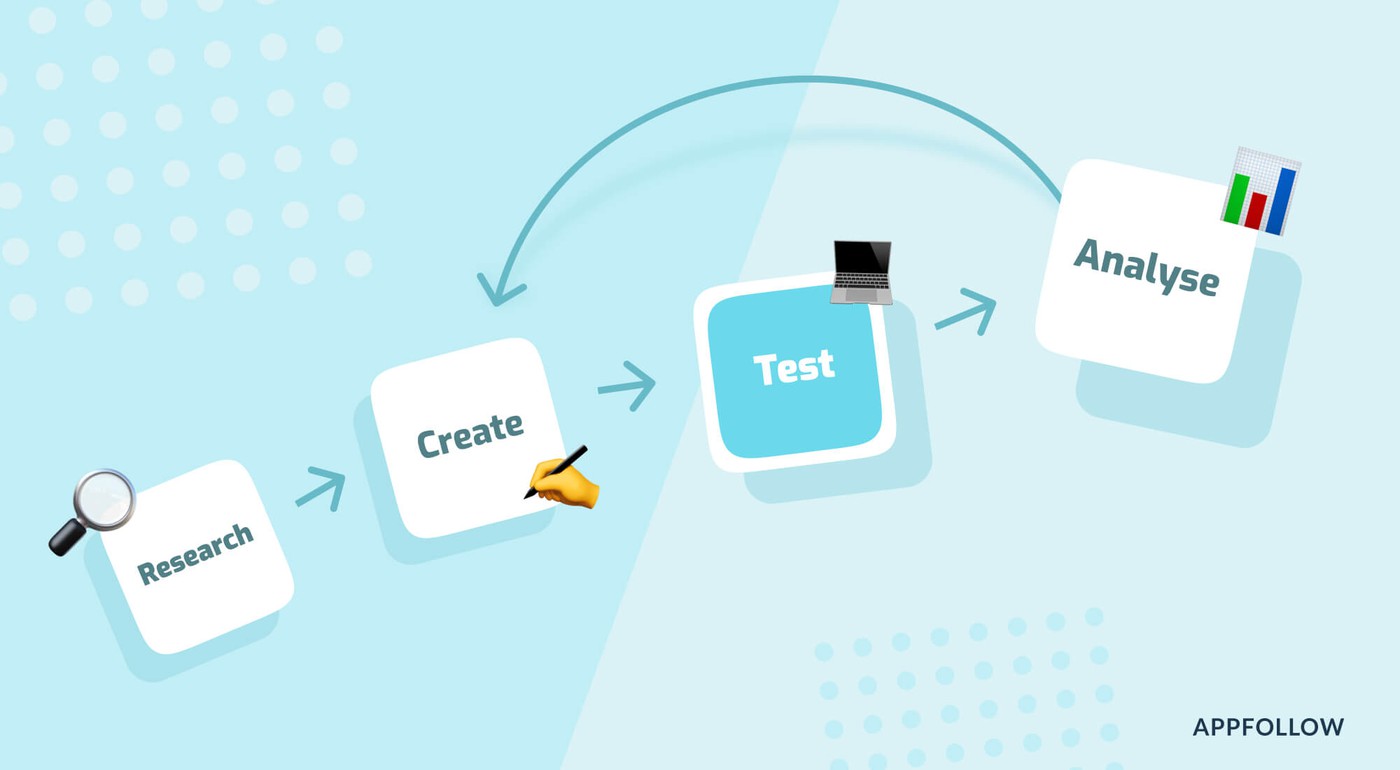How to build a mobile app users will (continue to) love

Table of Content:
Product fit is stage zero of the app strategy as it influences the whole journey you are going to take with your app. At our recent Mobile Growth Online Meetup, Vera Rabkina, Product Manager at AppFollow, talked about the ways to find product fit and build an app that users actually need.
This blog post covers what product fit in mobile app business is, discusses where the product stands in the business strategy, and provides insights on discovery methods, including app reviews study, gap search, and user interview. Don’t forget to check out the full video at the end of the blog post – it contains a lot of additional information on the topic.
What is product fit in mobile
Product/Market fit is a degree to which a product satisfies the market demand.
In the early stage of my career as a product manager, I thought that it was me to define what a product does and what features it includes. I thought that I could decide everything. Later I understood that I have some influence, but I definitely don't have the upper hand.
Users are the ones who define what your product should be like. But here’s the thing: users are not very good at telling what features they need. Otherwise product managers’ careers would be a way easier.
So, the process of finding product fit is all about getting the idea of what users need and providing it to them.
How to identify app strategy and product fit
Any business strategy has three corners: distribution, monetization, and the product itself. We will look into each of them and shape your product fit.

How to find app distribution insights
There are many ways to get distribution insights. I break them into:
- App Store Optimization discovery;
- User Acquisition discovery;
- Brand awareness.
App Store Optimization discovery
App Store Optimization is about boosting organic traffic, and it is a lot more than keywords. Keyword research helps get the initial understanding of what people are looking for.
signup_boosting
To start with, let’s do keyword research. In this example, I just put face yoga, and then I studied what search combinations people use. You can see that they search for anti-aging methods, some of them have a busy life. This gives us a bit more details and context about why people would like to install different face yoga apps.

Next, let’s study the apps that use these keywords. This will help us create a word cloud or mind map of what people search for when they install these apps from the App Store. From here we can start building our own hypothesis.

User Acquisition discovery
When it gets to UA discovery, your potential competitors have already tested enormous amounts of creatives for user acquisition campaigns. To gain an insight of what works for competitors and category leaders, I usually use Facebook Ad Library and just check their ads. This can save a lot of time and, well, money.

Brand awareness
It is important to think in advance about what you want to do about your brand. How much do you want to rely on it? Do you need to think about collaboration with influencers? Do you need to recruit somebody who will be an ambassador of your app?
If you ask yourself these questions in the beginning of your journey, it will be much easier for you to implement these strategies in the future.
Profiling
When I do distribution discovery, I do something that I call profiling. Basically, I split all the information I have gathered in three sections:
- Persona: Who these apps are for? I add all ideas I have got from keywords, ads, etc. At this point I just take notes, I don’t make any decisions.
- Context: When and where people will use these apps? Depending on the app functionality, some people might use it for their morning routine, or during the lunch break, or on a flight. Just keep gathering these ideas. We will see how they emerge later.
- Features. When doing distribution discovery I usually start running down features. Just don’t be too heavy on this at this point. It's just the beginning of your journey. You might have some ideas, but you still don't have enough information.

App monetization stategy
After we have done the initial study, we go further, and this is where monetization kicks in.
What I suggest is to check competitors and what monetization scheme they use. Users are more likely to switch to an app with the same monetization scheme, simply because they are used to it.

Product discovery
There are many methods of product discovery, but all of them belong to one of two groups:
- Opinion based methods
- Data based methods
A lot of product managers, myself including, like to combine both methods. Here’s how it works: I pick for the product discovery stage top three hypotheses which I feel would provide the most impact and which wouldn't require a lot of time and budget to implement them. Then I go for:
- App reviews analysis;
- User request search;
- User interview.
App reviews analysis
Reviews study is a must for everyone who is tasked to build any type of app. The reviews of your competitors’ apps can tell you a lot about what your potential users like and dislike. Besides, it would take an enormous amount of time to get the same number of feedback for your new app.
You can do the review study manually — just go on the App Store and read every review. Or you can use the AppFollow Semantic Analysis tool and filter out the reviews that contain feature requests.

No matter which method you choose, what you do next is just go through the list of reviews and highlight insights for your product strategy. For example, people might tell how often they use the app, what they like and don’t like about it, whether they find it complicated, etc. This way you will get many ideas from real users without a need to schedule a single interview with them.
Read here how to respond to reviews on the App Store and Google Play.
User request search
After you studied app reviews, you know more about your audience and you have a better understanding of their pains. So, now you can do gap search and find something that is missing in other apps.
Often best ideas could come from not exactly similar apps to the one that you are trying to build. My advice here would be to look category wise. While there are many app categories, their users might have very similar issues. So, study how a certain issue is covered by an app from a different category. You might get very interesting ideas from there.
Another important aspect is to understand your product landscape. Quite often we compete not only with similar apps, but apps that belong to the same topic group as well. In the example below you can see apps that rank for the keywords face yoga and yoga.

You need to study these apps and decide where you want to be and how you can stand out. When we talk about face yoga apps, personalization and education would be two of the most important components. So we study how they are implemented by competitors and start mapping:

User interview
It is a common practice to try to find people who would fit into your app audience and interview them. We have a lot of insights from previous steps and maybe some questions from the reviews study. So, during the user interview process we can validate our ideas and figure out whether other people have similar pains.
When you go for user interviews you should know what ideas you want to check and have an interview scenario. It is the only way to make this process efficient for you.
After that, we get back to profiling and we add there the information we have gathered. For example, during the interview process we might discover that the app is more suitable for the age category 35+, or that some people do face yoga as a part of their self-care routine, or we might get certain feature requests, etc. Now we have a better understanding of persona and a whole different context of when and how the app is used.

Product fit processing
Finally, as we have covered the whole business strategy triangle, it is time to process all the data.
When it comes down to building an app strategy, you need to understand what level of disruption risk you’d like to take. There are three common scenarios: disruption, evolution, and copying.

You should understand that if you disrupt the market and offer a unique product, it is a high risk. If you want to play pretty safe instead, you want to be in evolution.
In the evolution scenario it is vital to keep the core feature of your app similar to others. For example, in face yoga apps, a lesson that would teach users how to do different exercises is the core value. It is not a place to experiment, because people come for this feature, they have certain expectations and they don't want to learn new patterns. What you can experiment with is, perhaps, an initial test, or the way the information is presented.
Getting back to profiling, we have gathered a lot of ideas. Before picking up features for MVP, we need to understand: how long would take the execution of one or another idea and how high would be its impact? I usually map all the ideas for better visibility and then go for quick execution with high and medium impact.

Once you have built your MVP, you should gather your own data. Market analysis, reviews study, etc. are a good place to start. But at the end of the day, you should get results for your own app. Do testing as early as you can, before you invest a lot in the app and its development. You can do this via testing traffic for landing pages, UA creatives, pre-order and, finally, launching MVP.
Ideally, your Product discovery process would look like this, which allows multiple re-iterations and adjustments of your Product/Market Fit:

Watch the full video of Vera’s session at Mobile Growth Online Meetup:









